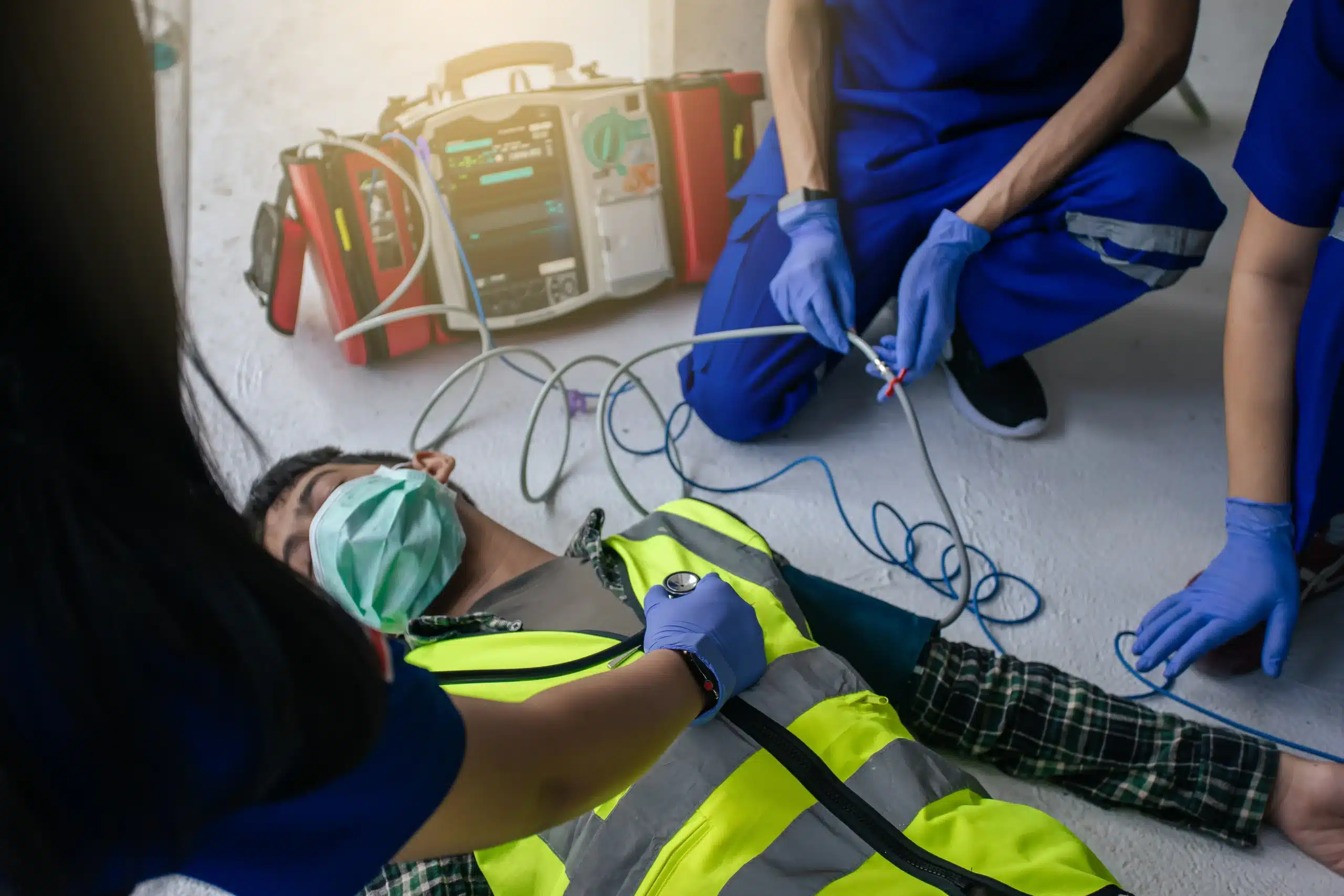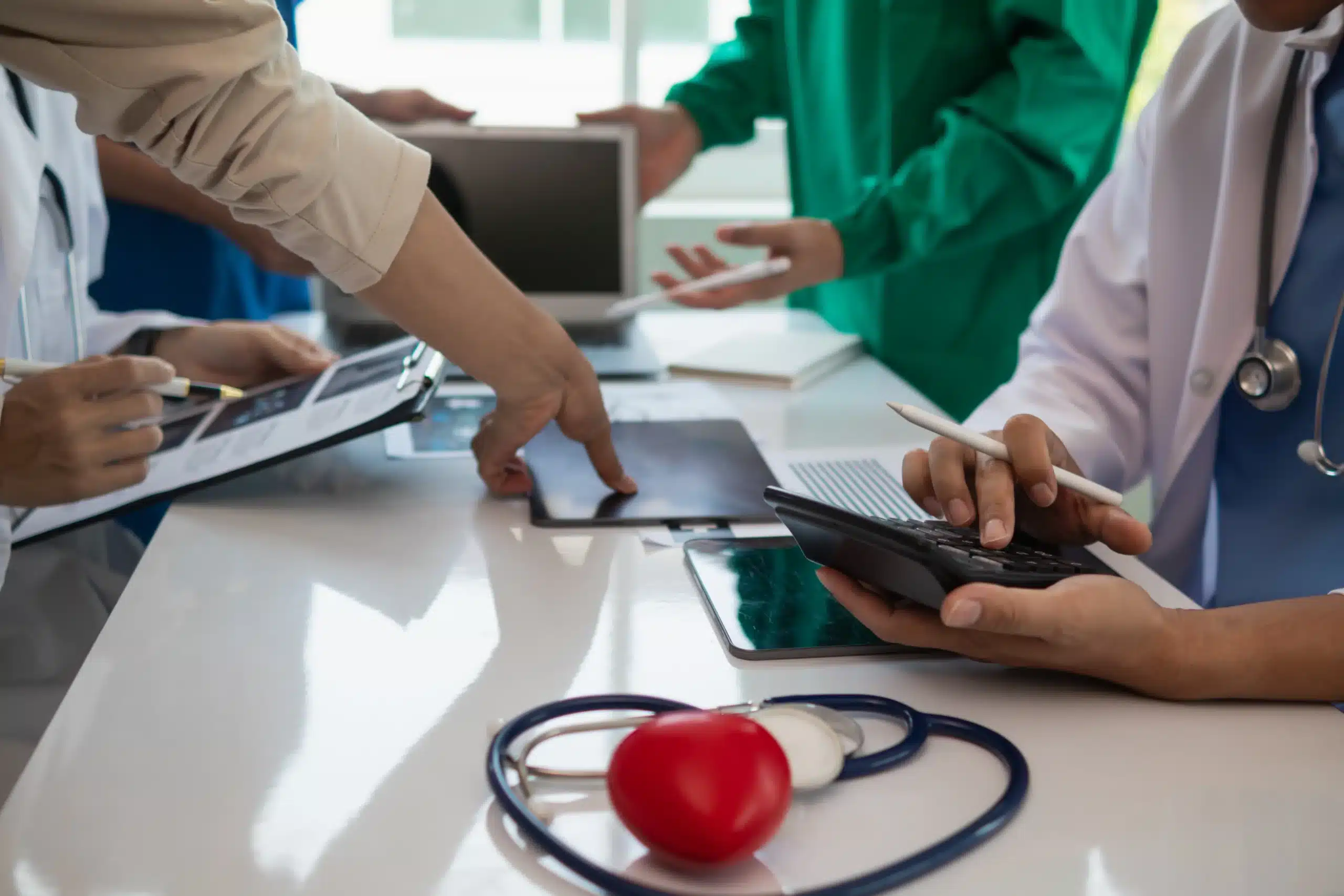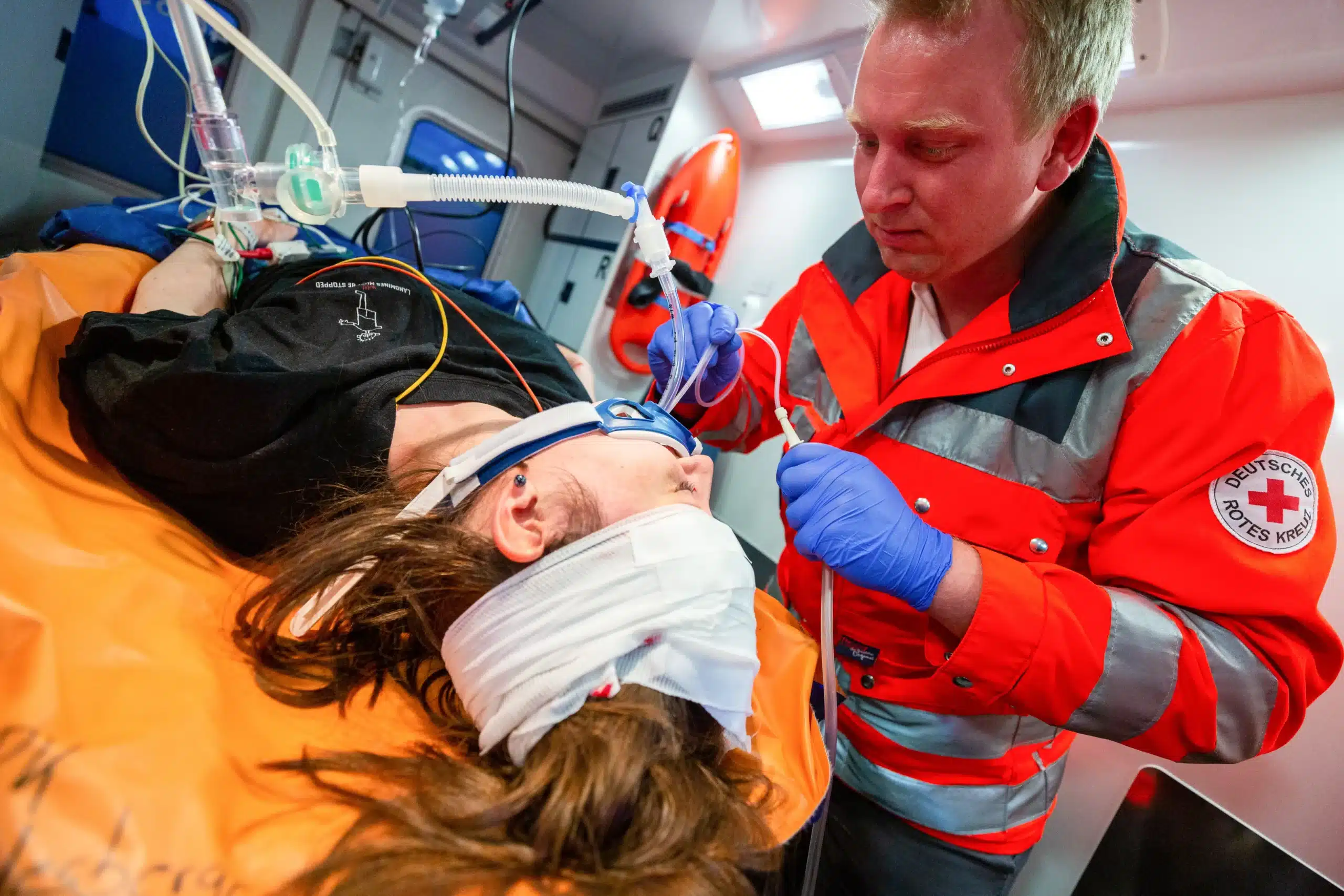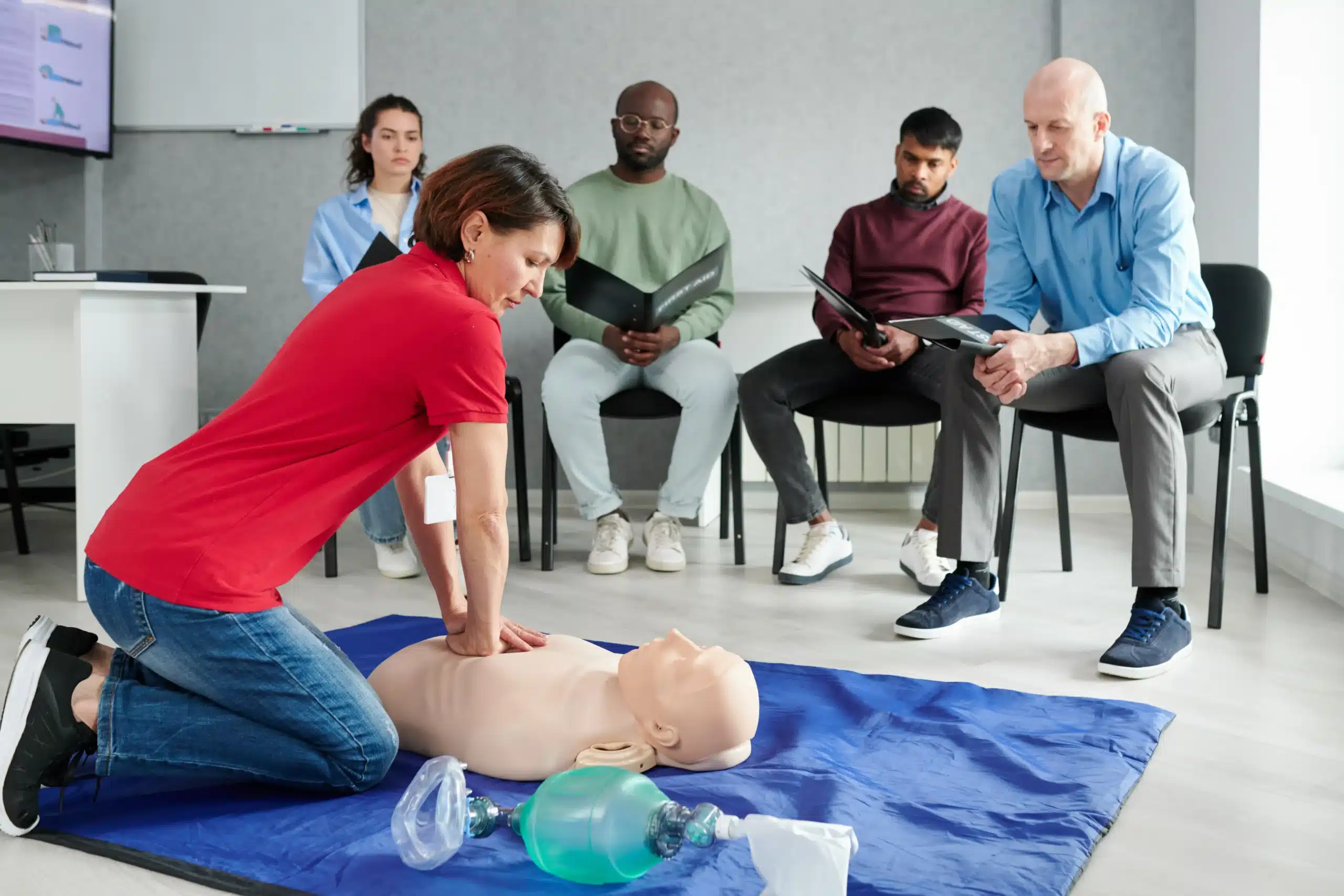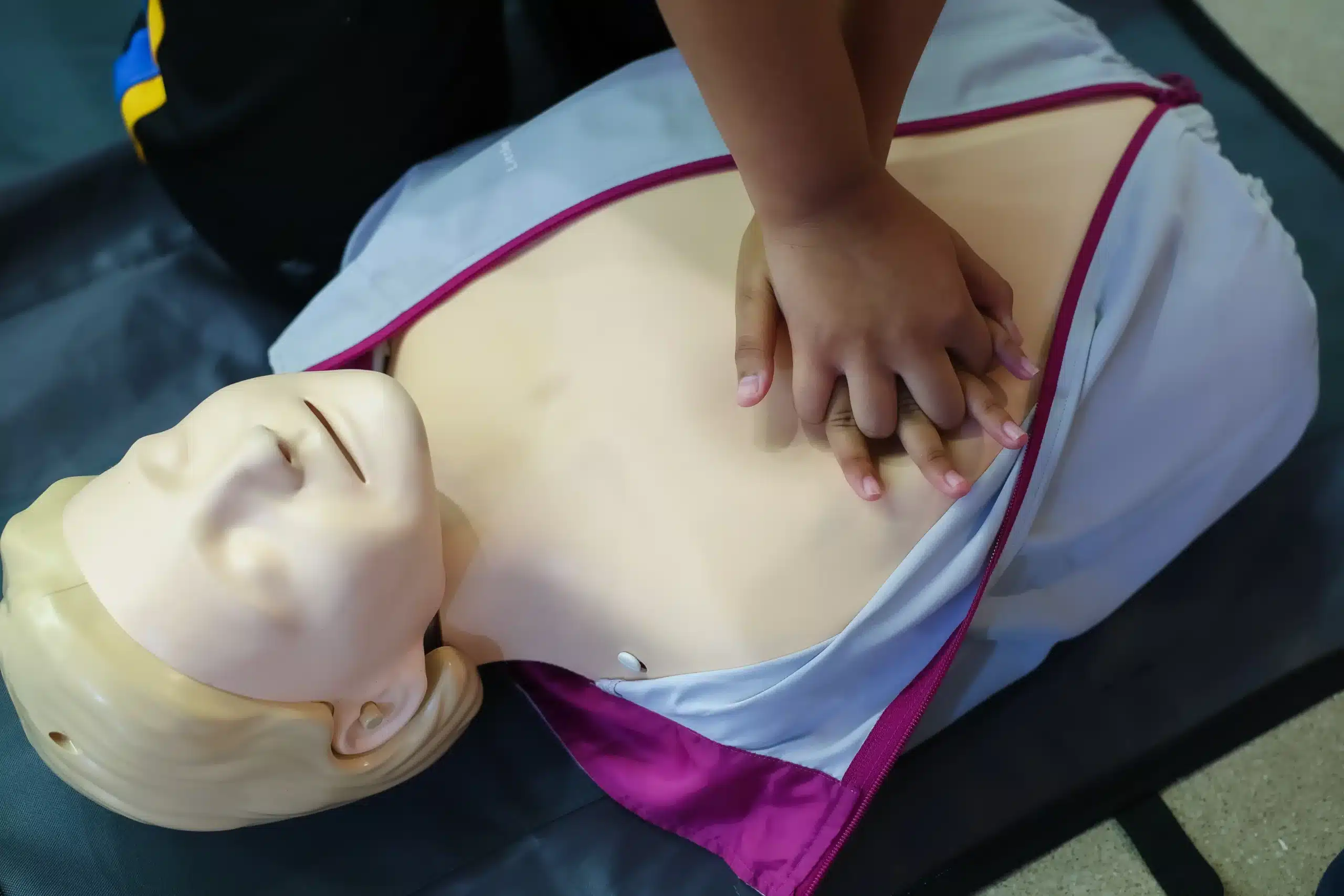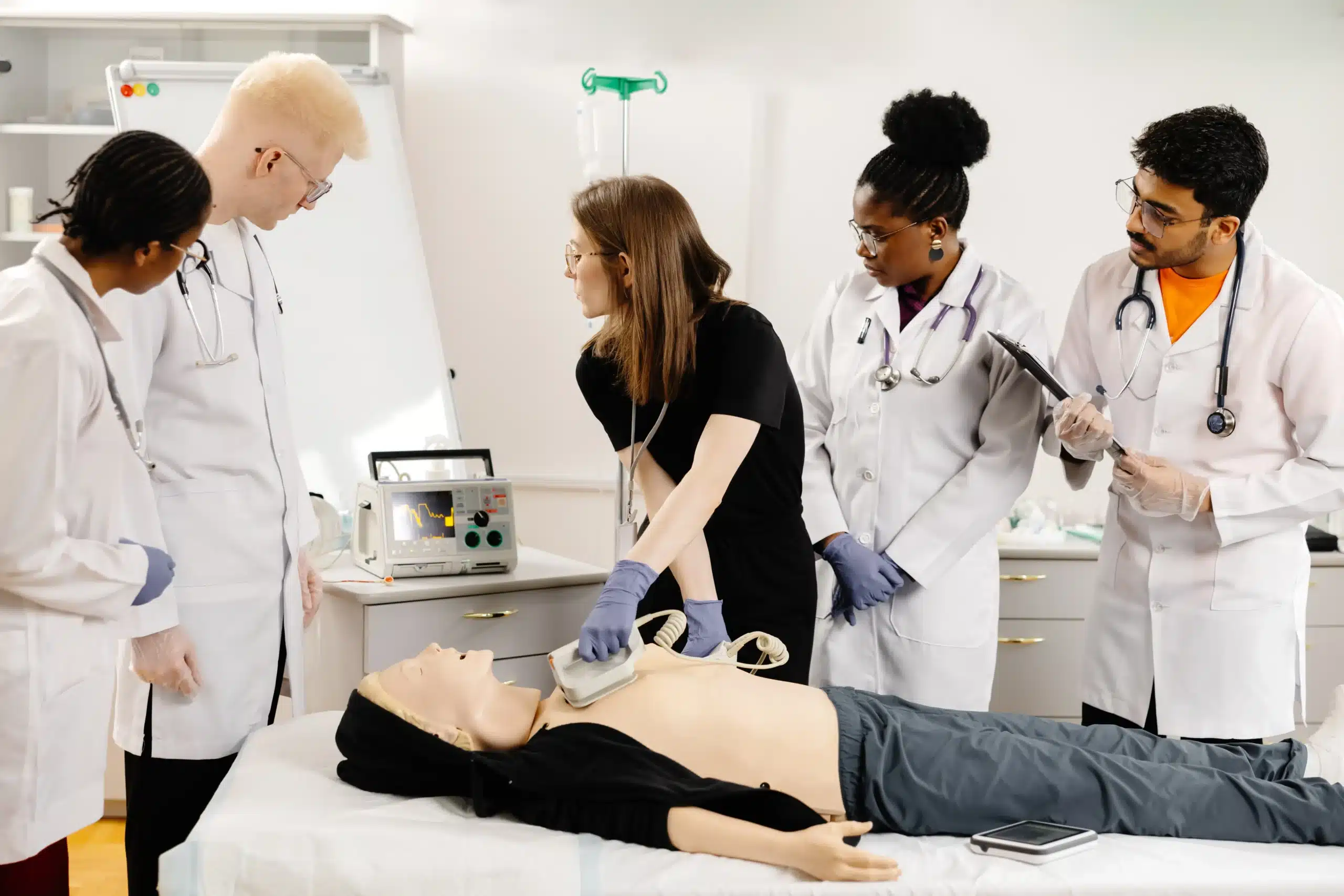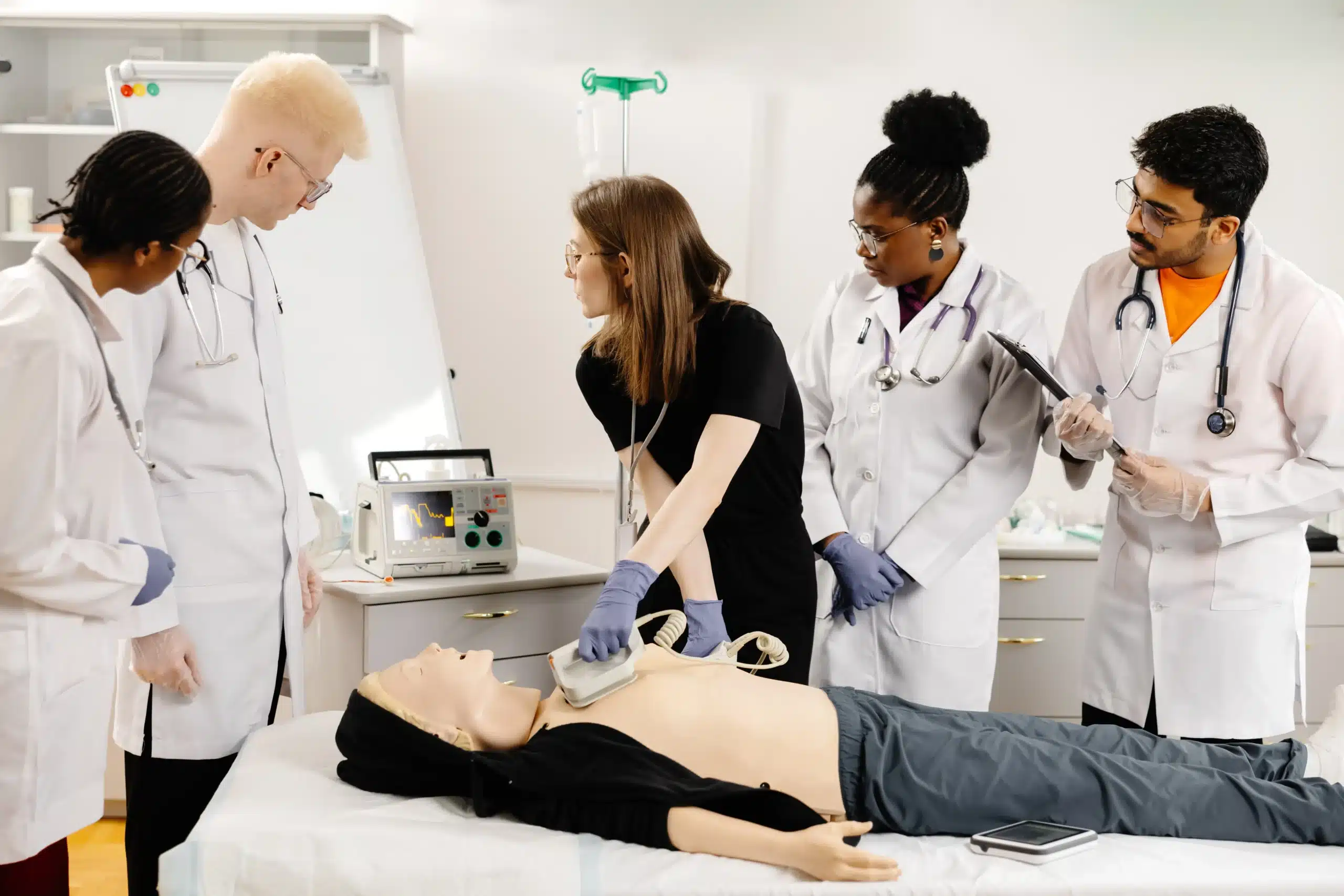Are you ready to become a vital link in the chain of survival? Basic Life Support (BLS) training empowers you to respond confidently and effectively in medical emergencies. It’s a comprehensive program covering essential life-saving techniques, including CPR, AED use, and airway management. Whether you’re a healthcare professional, a caregiver, or simply someone who wants to make a difference, BLS certification is a powerful tool. If your search for “BLS classes near me” has brought you here, you’re in the right place. This article will guide you through everything you need to know about BLS certification, from the skills you’ll acquire to the certification process and how to maintain your skills. We’ll also discuss the different types of BLS classes available and how to choose the right one for your needs.
Key Takeaways
- BLS certification empowers you to save lives: It provides the essential skills to respond effectively to medical emergencies, from CPR and AED use to airway management. Find a training provider that aligns with your schedule and learning preferences.
- Hands-on practice is crucial: While online resources are helpful, in-person training offers the practical experience necessary to build muscle memory and confidence for real-world scenarios. Look for courses that emphasize hands-on learning.
- Investing in BLS training benefits everyone: It enhances your career prospects, especially in healthcare, and prepares you to assist family, friends, and your community in times of need. Consider group discounts if you’re training with colleagues.
What is BLS?
Basic Life Support (BLS) is a level of medical care used for life-threatening illnesses or injuries until full medical care can be given. BLS certification focuses on providing immediate care to patients experiencing cardiac arrest, respiratory distress, or an obstructed airway. It’s a vital skill set for healthcare providers and anyone in a position to respond to emergencies. BLS differs from CPR (cardiopulmonary resuscitation) in that CPR is one skill taught within BLS training. If you are interested in learning more about our CPR and First Aid certification courses, visit our website.
Definition and Importance
BLS certification is a crucial credential for healthcare professionals and many other professions. BLS training equips individuals with the knowledge and skills to respond effectively to life-threatening emergencies. It emphasizes early recognition and intervention, which are key to improving patient outcomes. With proper training, certified BLS providers can confidently assess a situation, perform CPR, use an AED, and provide basic airway management. These skills are essential for maintaining a patient’s stability until advanced medical help arrives. For those seeking a low-price guarantee on their training, we offer a price match and flexible scheduling options. Learn more about our commitment to affordable training.
Skills You’ll Learn
BLS training teaches a range of life-saving skills. You’ll learn how to use an automated external defibrillator (AED), a portable device that can check a person’s heart rhythm and deliver an electric shock to restore a normal heartbeat. You’ll also learn basic airway management techniques, including how to open a patient’s airway and provide rescue breaths. Additionally, BLS certification covers techniques for assisting someone who is choking. These skills empower individuals to respond effectively in critical situations and potentially save lives. We offer group discounts, making it easier for teams to train together. Contact us to learn more about group discounts for BLS certification.
Types of BLS Classes
Choosing the right BLS class format depends on your learning style, schedule, and budget. Let’s break down the three main types: in-person, online, and blended learning.
In-Person Classes
In-person BLS classes offer a hands-on learning experience perfect for those who thrive in a traditional classroom setting. You’ll work closely with a certified instructor, practice skills in real-time with other students, and receive immediate feedback. This direct interaction can boost your confidence and improve your retention of life-saving techniques. Plus, the camaraderie and shared learning experience in a group setting can be invaluable. If you learn best by doing and appreciate personal instruction, an in-person class might be your best bet. Contact Vacaville CPR Classes to learn more about in-person courses.
Online Classes
Online BLS classes provide the ultimate flexibility. You can learn at your own pace, anytime, anywhere. This format is ideal for busy professionals, parents, or anyone with a packed schedule. You’ll work through interactive modules, videos, and quizzes, and you can revisit materials as needed. However, keep in mind that online-only courses may not meet all workplace requirements. Some certifications require an in-person skills assessment component. Be sure to check with your employer or certifying body to confirm their specific requirements. If you’re a self-directed learner and need a flexible option, an online BLS class could be a good fit.
Blended Learning
Blended learning combines the best of both worlds. You’ll complete the cognitive portion of the course online at your own pace, then attend an in-person skills session to practice and demonstrate your proficiency. This format offers a good balance of flexibility and hands-on training. It’s a great option for those who want the convenience of online learning but also recognize the importance of practicing skills in a real-world setting. Just remember to successfully complete the online portion before attending the in-person skills check-off. If you appreciate a flexible yet comprehensive approach, blended learning might be the ideal choice for you.
Find Reputable BLS Certification Providers
So, you’re ready to get your BLS certification—fantastic! Choosing the right provider is a crucial first step. Here’s what to look for:
Accreditation and Certification Standards
First things first, make sure any BLS course you consider is accredited by a recognized organization. American Heart Association (AHA) approval is essential, as many employers require it. Double-check the course description to confirm it’s AHA-approved; this ensures your training meets the highest standards. For those in or near Vacaville, CA, our courses meet these requirements.
Research Local Providers
Before committing to a class, do some digging on local providers. Reading online reviews that specifically mention BLS certification and hands-on training can give you a good sense of the course and instructor quality. Also, look at what’s included in the course fee—things like materials and equipment—to make sure you’re getting your money’s worth. We offer group discounts at Vacaville CPR Classes, so be sure to ask about those if you’re coming with colleagues.
Top BLS Class Providers
Here are a few well-regarded BLS class providers to get you started:
American Heart Association (AHA)
The American Heart Association sets the gold standard for BLS training. Their courses are widely recognized and respected, equipping healthcare providers with essential life-saving skills.
Red Cross
The American Red Cross is another excellent resource for BLS training and certification. They offer various learning formats—online, in-person, and blended—to fit different schedules and preferences.
National Safety Council
The National Safety Council offers a range of safety training programs, including BLS certification. Their focus on emergency response makes them a solid choice.
Vacaville CPR Classes
If you’re in the Vacaville, Dixon, or Fairfield area, Vacaville CPR Classes offers AHA-certified BLS training. We emphasize hands-on practice and provide immediate certification upon completion of the course, so you’re ready to respond to emergencies. Contact us today to learn more!
How Much Do BLS Classes Cost?
One of the first questions people ask is, “How much will this cost?” It’s a valid concern, but remember that BLS certification is an investment in your skills and can open doors to new opportunities. Plus, having the confidence to potentially save a life is priceless.
Average Price Ranges
BLS classes typically range from $70 to $100, depending on the training center and location. For example, CPR Classes Brooklyn offers AHA BLS CPR training for $74.95. Shop around and compare prices, but don’t make cost your only deciding factor. The quality of instruction and the reputation of the provider are just as important. Vacaville CPR Classes offers a low-price guarantee, ensuring you receive high-quality training at a competitive price.
Factors Affecting Cost
Several factors can influence the cost of BLS classes. These include the format of the course (in-person, online, or blended), the course length, the materials included, and the instructor’s experience. Some training centers may also offer additional perks, like free refresher courses or online resources, which can affect the overall price. While cost is a consideration, remember that BLS training offers numerous benefits, including enhanced life-saving skills and increased confidence in emergencies, as highlighted by ACLS-BLS-Louisville. It’s an investment in your future and the well-being of those around you. Consider reaching out to Vacaville CPR Classes to discuss your specific needs and budget.
Group and Student Discounts
Many BLS providers offer discounts for group registrations and students. If you’re signing up with friends, family, or coworkers, or if you’re currently a student, be sure to ask about potential discounts. Vacaville CPR Classes, for example, offers group discounts, making it more affordable to train as a team. Before you choose a class, check online reviews to get a sense of the quality of instruction and the overall experience, as suggested by A-B-CPR. This will help you find the best value for your money. They also offer RQI classes for healthcare professionals seeking efficient and flexible resuscitation training.
What to Expect in a BLS Class
So, you’ve decided to get BLS certified—great choice! Knowing what awaits you can help you feel prepared and confident. Here’s a glimpse into the typical BLS class experience:
Course Duration and Structure
BLS classes are designed to be efficient and comprehensive, typically lasting about three hours. You’ll find several learning formats available, including online, in-person, and blended learning options. This flexibility lets you choose the format that best suits your schedule and learning style. For example, if you’re a busy parent or work full-time, an online or blended learning course might be more convenient. If you prefer hands-on learning and direct interaction with an instructor, an in-person BLS class could be a better fit.
Key Topics Covered
BLS classes cover a range of essential life-saving skills. You’ll learn adult, child, and infant CPR, including how to use an automated external defibrillator (AED). The curriculum also covers basic airway management and how to help someone who is choking. These skills equip you to respond effectively to various emergency situations. You’ll also learn the importance of teamwork and critical thinking during emergencies, which are crucial for positive outcomes. BLS certification training provides a comprehensive foundation for responding to medical emergencies.
Hands-On Practice
Hands-on practice is a vital part of BLS training. It helps you develop the muscle memory needed for effective CPR and AED use. Through realistic simulations and practice scenarios, you’ll gain the confidence and competence to respond quickly and efficiently in real-life emergencies. This practical experience is invaluable in solidifying your skills and preparing you to act decisively when it matters most. At Vacaville CPR Classes, we emphasize hands-on training to ensure you’re fully prepared. Contact us today to learn more about our hands-on training approach.
Choose the Right BLS Class
Finding the right BLS class means considering a few things to make sure it fits your learning style, schedule, and career goals. Don’t just pick the first one you find—take some time to figure out what you need.
Consider Your Learning Style
Think about how you learn best. Hands-on, in-person training is essential for developing the muscle memory you’ll need for effective CPR. If you like interactive learning with direct feedback from an instructor, a traditional classroom setting might be best for you. Some students prefer a blended learning approach, combining online coursework with in-person skills practice. Purely online courses, while convenient, generally aren’t enough for BLS certification because they don’t offer the crucial hands-on component.
Time Commitment and Scheduling
BLS classes come in different lengths, usually ranging from a few hours to a full day. Think about your availability and choose a course schedule that works for you. Weekday evening or weekend classes are often good options for busy professionals. If you have a packed schedule, look into accelerated or express courses that cover the essentials in less time.
Career Requirements
Many healthcare professions require BLS certification. Knowing the specific requirements of your field is key when choosing a BLS class. Make sure the course meets the standards of your employer or licensing body. For example, healthcare providers often need a specific “Healthcare Provider” BLS certification, which is different from general CPR training. BLS training offers many benefits to healthcare professionals, like better life-saving skills and improved patient outcomes. Even if it’s not required, BLS certification can strengthen your resume and show your commitment to patient safety, making you a stronger candidate. Basic Life Support training can be helpful in almost any work environment.
Get BLS Certified
Ready to become BLS certified? This section covers the exam, certification process, and how to keep your skills sharp. At Vacaville CPR Classes, we streamline BLS certification with convenient daily courses through Safety Training Seminars.
Exam Format and Passing Criteria
BLS certification involves two parts: online learning and an in-person skills test. The American Heart Association (AHA) requires an in-person demonstration of your skills, so there’s no completely online option. This hands-on approach ensures you can confidently perform BLS in a real-life emergency. For specific exam details, check with your chosen certifying organization.
Certification Validity and Renewal
Your BLS certification remains valid for two years. To maintain your skills and stay certified, you’ll need to recertify. Recertification courses are usually available within 30 days of your certification expiring, giving you plenty of time to schedule. Contact Vacaville CPR Classes for recertification options and our low price guarantee. We also offer group discounts to make training multiple employees more affordable.
Prepare for Your BLS Class
So, you’ve signed up for a BLS class—congratulations! Now it’s time to prepare. A little prep work goes a long way in making sure you get the most out of your training. This section covers everything you need to know to feel confident and ready for your upcoming BLS certification course.
Pre-Course Materials and Study Tips
Many BLS providers offer pre-course materials. Check with your provider, like Vacaville CPR Classes, to see if they offer a student handbook or online resources. Reviewing these materials beforehand can familiarize you with basic concepts and terminology, allowing you to focus on practical skills during the in-person training. Even if your course doesn’t have required reading, consider brushing up on CPR guidelines from the American Heart Association. Knowing the algorithms ahead of time will help you perform effectively under pressure. As the ACLS notes, BLS equips healthcare providers with the skills to follow these algorithms, leading to the best patient outcomes. This preparation can make a real difference in your performance.
What to Bring
While your BLS provider will supply the mannequins and other training equipment, there are a few things you should bring to class. A notebook and pen are helpful for taking notes and writing down questions. Dress comfortably; you’ll be moving around and practicing skills on the floor. Comfortable shoes are essential. Also, bring a water bottle to stay hydrated, especially during longer training sessions. Finally, don’t forget your photo ID. You’ll need it to check in and receive your BLS certification card. BLS training increases your appeal to future employers, so having that certification readily available is important.
Mental and Physical Readiness
BLS certification involves both mental and physical exertion. Being mentally prepared means arriving focused and ready to learn. Get a good night’s sleep before class and avoid distractions during the training. The ability to concentrate and retain information is crucial for mastering the techniques. Physically, be prepared for hands-on practice. You’ll be performing compressions and practicing other skills that require some physical stamina. As ACLS-BLS Louisville explains, healthcare professionals trained in BLS can intervene immediately in emergencies. This quick action often depends on physical readiness. While BLS training can be demanding, it also builds confidence. Knowing you can handle emergency situations is empowering, both personally and professionally.
How BLS Training Impacts Healthcare Professionals
BLS training significantly impacts healthcare professionals, shaping their skills and the quality of care they provide. It’s a cornerstone of patient safety and effective medical practice. Let’s explore some key benefits:
Improve Patient Outcomes
BLS certification equips healthcare providers with the skills to respond effectively to life-threatening emergencies. From recognizing respiratory distress to performing high-quality CPR, these learned procedures directly influence patient survival and recovery. ACLS.com highlights how BLS training empowers professionals to follow established algorithms, ensuring the best possible outcome for every patient. This training translates to real-world impact, giving professionals the tools to make a difference when seconds count. Our CPR and first-aid certification courses at Vacaville CPR Classes emphasize these life-saving techniques.
Enhance Confidence in Emergencies
Beyond technical skills, BLS training cultivates confidence. Knowing how to assess and manage emergencies empowers healthcare professionals to act decisively under pressure. This confidence translates to more efficient responses, minimizing delays and improving the chances of positive patient outcomes. ACLS-BLS Louisville emphasizes how this increased confidence enhances overall performance in critical care. It’s not just about knowing what to do; it’s about having the confidence to do it effectively when it matters most. This can make a profound difference in patient care.
Comply with Industry Regulations
BLS certification is often a requirement for employment in healthcare. This reflects the industry’s commitment to maintaining high standards of patient care. By requiring BLS certification, healthcare facilities ensure their staff possesses the essential skills to handle emergencies. ACLS-BLS Louisville points out that BLS training helps professionals meet these regulatory requirements, opening doors to career opportunities and demonstrating a commitment to best practices. If you’re looking to advance your healthcare career, BLS certification is a crucial step. Contact us at Vacaville CPR Classes to learn more about our training programs.
Related Articles
- BLS Certification in Dixon: Your Complete Guide – Vacaville CPR Classes
- BLS Courses in Vacaville: Your Guide – Vacaville CPR Classes
- Advanced Cardiac Life Support (ACLS) Training in Dixon – Vacaville CPR Classes
- BLS Courses in Fairfield: Your Complete Guide – Vacaville CPR Classes
- Online BLS Classes in Dixon: Your Guide – Vacaville CPR Classes
Frequently Asked Questions
What’s the difference between BLS and CPR? CPR, or cardiopulmonary resuscitation, is one of the core skills taught within Basic Life Support (BLS) training. BLS encompasses a broader range of skills, including using an AED, relieving choking, and understanding basic airway management, all essential for responding to medical emergencies. Think of CPR as a vital component within the larger framework of BLS.
How do I choose between in-person, online, and blended BLS classes? Consider your learning style and schedule. In-person classes offer hands-on learning and direct interaction with an instructor. Online classes provide flexibility for busy schedules, but may not meet all certification requirements. Blended learning combines online coursework with in-person skills practice, offering a balance of convenience and hands-on training. Remember, BLS certification typically requires an in-person skills assessment, so a purely online course might not suffice.
How much does BLS certification cost, and are discounts available? BLS class prices typically range from $70 to $100, but this can vary based on location, course format, and provider. Many providers offer discounts for groups and students. It’s always a good idea to inquire about potential discounts when registering. Remember, while cost is a factor, prioritize the quality of instruction and the reputation of the provider.
What should I expect during a BLS class, and how can I prepare? Expect a combination of classroom instruction, demonstrations, and hands-on practice. You’ll learn essential skills like CPR, AED use, and airway management. To prepare, review any pre-course materials provided, dress comfortably, and bring a notebook, pen, and water bottle. Most importantly, arrive focused and ready to learn. Being mentally and physically prepared will help you get the most out of your training.
How long is BLS certification valid, and how do I renew it? BLS certification is typically valid for two years. To renew, you’ll need to take a recertification course before your current certification expires. Contact your certifying organization or training provider for information on recertification courses and schedules. Staying current with your certification ensures you maintain the necessary skills to respond effectively in emergencies.
